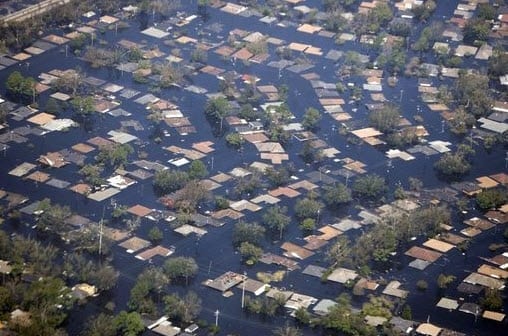The first half of this week found my daughter and me in southern New Jersey. One day we rode down to Ocean City, a lovely coastal resort town with a 2 1/2 mile boardwalk and bustling tourist industry.
Ocean City is actually a barrier island. An ephemeral sand mound that forms in front of mainlands, and shifts in and out of existence within a few centuries -- the blink of a geological eye. But, as at many barrier islands, Ocean City's charms quickly drew settlers, investments, and infrastructure. And they now want to stay put.
Cue the eternal fight between nature and man, with the boardwalk and beach as the front line. This town is no stranger to nature's wrath.
 |
1962 Ash Wednesday storm
Source |
 |
1991 October "Perfect Storm"
Source |
Over the past century engineers have dumped countless tons of imported sand onto her beaches, only to watch it wash away again. 22 times from 1952 to 1995
to a tune of $83 million (p.3 of the PDF), a
$21 million effort in 2010, and
$7 million more in 2012. Here is the latest effort -- an artificial dune system, staked off from foot traffic and heavily planted with dune grass and
beach plums.
 |
| Taken by the author, May 1, 2012 |
The hope is that this manufactured dune will absorb storm surges and help maintain the beach -- so tourists will continue to come, frolic, and spend money. It may, or may not, for a while. But sea level is rising...
...and will continue to rise. It's a losing battle, getting more expensive as the waves strengthen. Eventually the annual funds will run dry. Then? Then comes a choice between a few options, all bad.
Which makes Ocean City just one of thousands of such spots around the world here in the 21st Century.
The archaeologist in me has seen this before. This is Ostia, for centuries imperial Rome's proud port town:
But by the time St. Augustine visited it around AD 400, parts of the city were a swamp, and rubble had been dumped along the Tiber to hold it back. A few generations later the city was a ruin of hovels. It became so infested with swamp disease and malaria that later scavengers largely left it alone. In a way, a slow-death Pompeii, only rediscovered in the 20th Century.
And it's not just oceans and seas that change with time. Here's Hadrian's Wall in Cumbria, northern England, running east to west (top to bottom), approaching what was once the eastern abutment to the Roman bridge over the River Irthing (bottom of picture).
Except... where's the river? It's moved, about 100 feet west, over the past 1800 years. A raging flood or two changed its course, undercut the western abutment, and brought low this engineering marvel. One of many Hadrian's Wall bridges that met similar fates.
Bridges. Cities. Monuments to man's ingenuity. Laid to waste.
So what does all this have to do with the Flotsam Diaries? Everything. Today we build condos & business districts at the edge of shifting sands. We build whole cities in flood plains. We fill them with plastic. And then we're shocked when Mother Nature does what Mother Nature does.
 |
New Orleans, 9th Ward, post-Hurricane Katrina 2005
Source |
Back at Ocean City, nature is again going to do what she does. Sooner or later. Regardless of a man-made sand dune. And when she does, there will just be that much more persistent plastic wreckage in the ocean for my daughter's grandchildren to deal with. Because of the choices that we make today.
So maybe we could make better choices?









